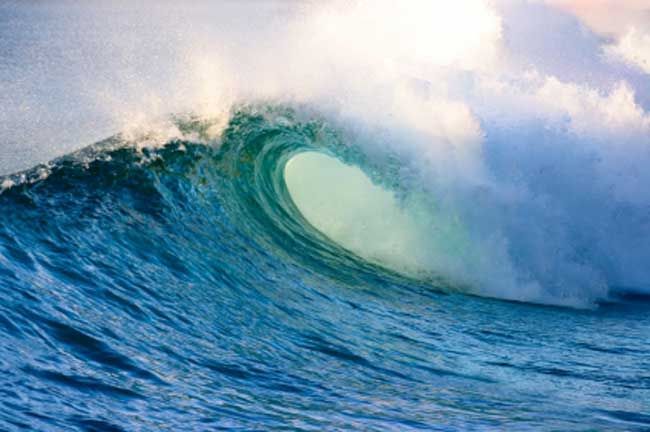Freak Hurricane Wave Strikes Maine

No matter how much warning officials give, some people flock to the shore to see waves from hurricanes. The ocean, however, is not always as predictable as people might like.
Though Hurricane Bill did not make a direct hit on the U.S. East Coast, its wave-making power was made clear Sunday when a surprisingly large wave, termed a "rogue wave" by the Portland Press Herald, struck Acadia National Park. A 7-year-old girl was killed, and three other people had to be pulled from the water.
Scientists don't fully understand how unusually large waves can suddenly emerge among smaller ones. But a study last year revealed one way:
Normally a large wave on the open ocean breaks into smaller waves, in a dampening effect caused by interaction with other waves. But lab tests showed that the opposite can occur: Small waves can join forces to become monsters "that emerge surprisingly quickly," explained researcher Peter McClintock, a physicist at the University of Lancaster in England.
Sunday's killer wave got an assist from an above-average high tide and Hurricane Bill's storm surge, which piled water near the coast to put otherwise high-and-dry locations at risk. How exactly the surprisingly large wave formed remains unknown, however.
Interestingly, a series of mysterious, 12-foot waves — which had the look of tsunami waves — struck Maine's Boothbay Harbor last October.
In The Water Cooler, Imaginova's Editorial Director Robert Roy Britt looks at what people are talking about in the world of science and beyond. Find more in the archives and on Twitter.
Sign up for the Live Science daily newsletter now
Get the world’s most fascinating discoveries delivered straight to your inbox.
Robert is an independent health and science journalist and writer based in Phoenix, Arizona. He is a former editor-in-chief of Live Science with over 20 years of experience as a reporter and editor. He has worked on websites such as Space.com and Tom's Guide, and is a contributor on Medium, covering how we age and how to optimize the mind and body through time. He has a journalism degree from Humboldt State University in California.












